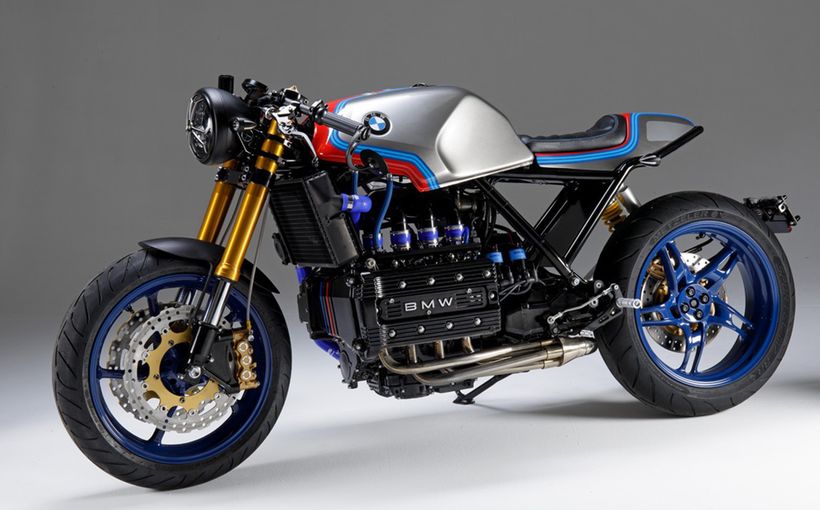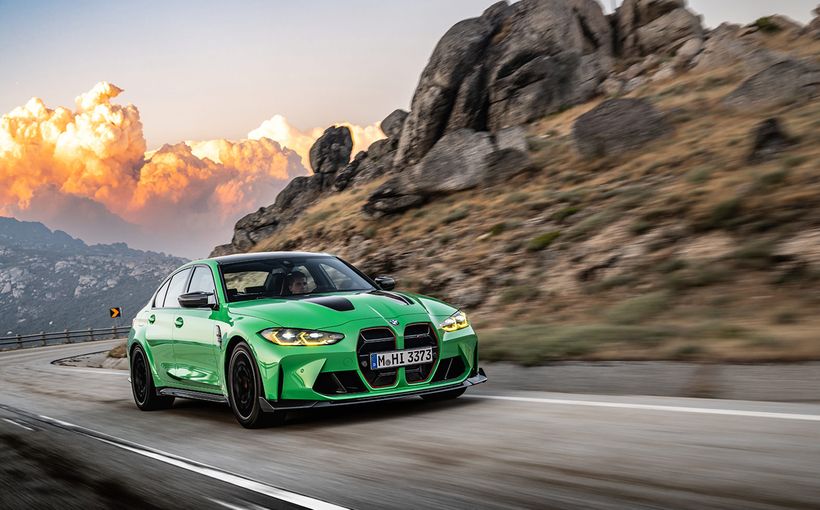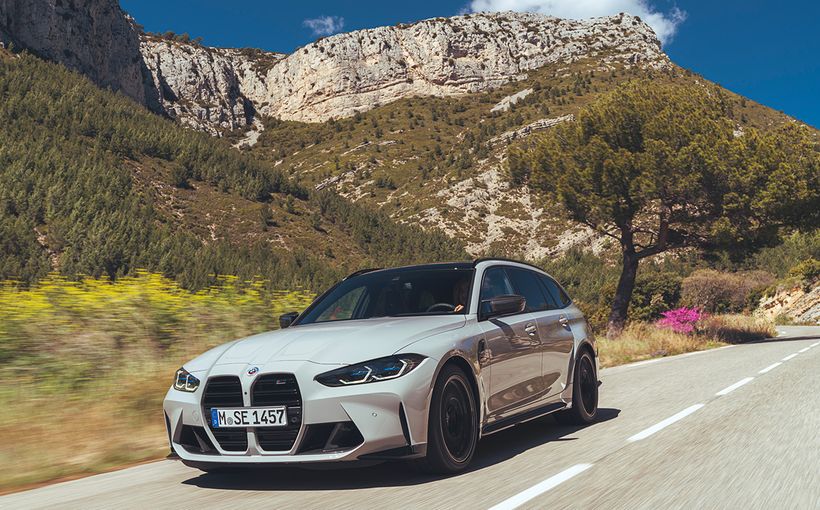
On paper, it doesn't seem to add up. For the price of a good second car, the BMW 323i owner can have instead a little Bee Em that goes a bit harder, corners a bit better and looks a bit different to other 323s. Sixteen grand's worth of improvements to a car that most people will agree is hardly in dire need of improvements. The $46,000 BMW 323i hasn't been invented, people will say, and so what if the badges say Alpina?
Alpina is to BMW what Peter Brock's HDT is to Holden: the right place to go for a car with a bit extra, and an operation proven by time and effort to have more in common with the manufacturers than mere backstreet speed shops. German Alpina customers have five models to choose from - including the B7 Turbo, a Six Series coupe with an alleged 243 kW for 267 km/h - but in Australia a new company, Bavarian Motorsport, is looking at Alpina versions of the new Three Series, specifically the C1 2.3 which was recently converted to Alpina spec in Sydney and which, the company hopes, will mark the start of a small conversion business in league with participating BMW dealers.
Alpina claims the C1 engine - lightweight Mahle pistons, hot camshaft and reset Bosch LE-jetronic are features - punches out 125 kW at 6000 rpm and 225 Nm of torque at 5000 rpm: over a standard 323i, that's 23 percent more power 700 rpm higher and 10 percent more torque 1000 rpm higher. Factory performance figures say the C1 accelerates to 100 km/h in 7.8 seconds and peaks at 213 km/h when using BMW's standard overdrive-fifth gear ratios and a 3.25 final drive which is what Alpina recommends. The test car, the first new model Three Series conversion in Australia, did the 0-100 sprint in 8.2 seconds; not bad considering the engine was about 15 kW short of power.
Changes include lowered suspension with Bilstein gas inserts for the front end's MacPherson struts and Bilstein gas dampers at the rear, progressive rate coil springs both ends and Alpina's own 16 inch alloy wheels shod with Pirelli P7s of a very low profile 195/50 size. The body - and the C1 conversion is available for both two and four-door versions - gets a deep front spoiler, rear lip spoiler and the Alpina decals stretching along the flanks. Inside, Recaro seats are fitted at the front and the rest of the cabin is retrimmed with leather, as standard, to match. A limited-slip diff, along with air conditioning, power steering and four speaker stereo, are also part of the package.

Standard, too, are the looks of passers-by, for the car is a headturner; at least it is when, like the test car, it's painted burgundy with gold stripes. This is a little surprising considering the sobriety of the changes, but is a justified reflection of the car's finish: and it doesn't take much of a look to find that the 'add-ons' are anything but, and that the detail engineering of Alpina's work, both above and under the skin, is of BMW quality, or better.
You know this is no standard 323i as soon as you get in: the white leather trimmed seats are mounted lower than the standard car's buckets and this makes entry and exit more difficult, but certainly not awkwardly so. Once inside, you're immediately aware of a roomier driving position, the lower seats and smaller steering wheel, a lovely thick-rimmed four-spoker, giving the hands and arms more useful room in which to work. The cabin benefits hugely by the, added class of the leather while the firm and heavily bolstered Recaros locate driver and passenger so securely there is never any risk of sliding around through corners.
At idle there's a base rumble from the exhaust that no factory BMW would display. The engine blips cleanly, given a firm push on the long travel and stiffly sprung accelerator pedal, and remains clean and untemperamental even after much city driving. This says a lot for the excellence of the induction arrangements, for the six has a very 'cammy' feel to it with all the good power being developed way up the rpm range. Below 2000 rpm the engine is useless; below 3500 it's disappointingly flat, and even as high as 4500 rpm you're still left wondering what all the fuss is about. At 4700 rpm, in a turbo-like rush of power, the engine comes alive, thrusting the car forward in a satisfying, but hardly supercar, surge as the tacho needle flicks to the red line (at 6500 rpm) and rev limiter (at 6750) - and making a wonderful noise as it does it.
That's not to say the Alpina C1 is always as fast and responsive as it should be: the tall gearing, with a sizeable gap between second and third, exacerbates the lack of both power and torque low down and makes the car feel sometimes lethargic. The BMW is not known for its grunt below 3000 rpm but the Alpina manages to fare worse, especially in fourth gear, where up to about 100 km/h the C1 is slower than the standard car, while the second-third gap, annoying in the BMW, turns into a yawning chasm in the Alpina, keeping the engine on cam only if second is wrung out.
Do that though and use the delightfully slick gearbox to the full, and there are worthwhile savings over the standard car: a second off the 0-100 km/h time and two seconds off 0- 130. Top speed is claimed to be 213 km/h, while the tall gearing does have a benefit for cruising: holding 200 km/h in this car is no problem.
On the road, the C1 emerges as being improved in a host of ways over the 323i for very little penalty - proof, if it were needed, of Alpina's sound development. That development is especially notable in the tuning of the suspension to the P7s, which is an unbridled success. Footprint is the same as before but the rims are 16 inch, not 14s - a change which fills out the guards very successfully - and the profile is a very low 50 percent. Combined with superb damping and spring rates and much superior body control, the C1's handling leaves the standard car for dead.

You first notice how flat the body stays, and how much sharper this makes the steering, although with a power-assisted 3.8 turns lock to lock it's unnecessarily low geared. There's good feel, however, and with the P7s' new bite the car turns into corners much faster and more precisely than the standard 323i, and goes around, still without any discer~ible body movement, with significantly increased road holding. Too much power on a wet or slippery road, as it was for our drive, and the front will run gently wide in understeer; lift off and there's some movement from the rear but certainly no dramatic switch to oversteer as the car's weight shifts. Equally, pushing the tail out with power –which requires the engine to be well on cam, for traction is markedly better, especially in the wet- is drama-free.
Such extrovert tactics are unnecessary, however there's the cost of the P7s to consider! - for here is a BMW without a natural inclination to go sideways. Keep the car smooth, which is easy to do even on choppy surfaces, and the rewards are there for the taking: absolute precision, good communication, fine stability and an agility, despite low geared steering, that is unlike any factory BMW. It is also a very easy car to drive fast, with absolutely reliable controls and a delightful smoothness in the drivetrain and the way the car changes direction.
For a car with such strong suspension control it's a surprise to find the ride quality is largely smooth; not soft, certainly, but with an overriding impression of body flatness . The worst ride is at low speeds on broken surfaces roads where the well-damped wheels will fall heavily, and noisily, into potholes. Smaller irregularities, expansion joints and cats' eyes, are absorbed quite well, and neither is there intrusive bumpthump or tyre roarin these respects the Alpina, on P7s no less, is no worse off than the standard 323i, and it may be that coarse surface tyre roar is actually less than in the factory car.

The ride quality and the seats are a fine match for doing what this car does best- long distances. Other things help: little wind noise, a muted thrum from the engine when cruising, excellent ergonomics and instrument clarity, good heating and ventilation, and the promise of decent economy (we got 7.7 km/l or 21.7 mpg for very hard driving; about 10 km/1 or 28 mpg should be feasible for cruising, for a fabulous near 1000 km range from the Alpina 96 litre fuel tank). The lazy can have their C1 with automatic transmission, while those with kids can opt for the four-door; although, as always, room in the back is not generous.
At the price, the missing central locking and electric windows come as a surprise but this won't matter to those few people for whom the magic of an Alpina is everything and to whom the price is within reach.
It's likely, however, that only diehard BMW Alpina fans will see appeal in the C1 - at $46,000 for such marginal extra performance it could be no other way. The close ratio gearbox has the promise of making the car a better bet for local conditions, for in current form it's as first thought: the C1 just doesn't add up.

Go Back in Time with the Wheel Archive. Get FREE access to 5 years of Wheels archive content now!
Protect your BMW. Call Shannons Insurance on 13 46 46 to get a quote today.









